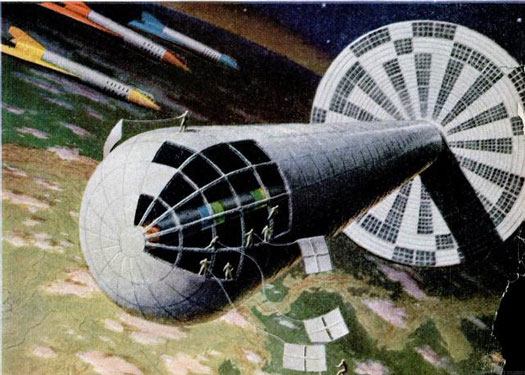

Let’s face it, sometime within the next century or so, overpopulation, the exhaustion of natural resources, an alien invasion — or perhaps the optimistic spirit of adventure — will force us to leave Earth in search of a new habitat. Earlier this week, NASA and DARPA announced a preliminary “Hundred-Year Starship” program for sending pioneers on permanent missions to Mars. To many, relocation from Earth sounds like a glorified exile, but some retro-futuristic eye candy from the Popular Science archives will surely change their minds.
Click to launch the photo gallery.
People living in the mid-1950’s were famously optimistic about the future of space exploration and colonization. Establishing cities outside of earth would not only prolong the survival of our species, but it would allow us to sow a legacy of art and technology into the universe.
Renowned science fiction authors like Arthur C. Clarke produced literature that only fueled the public’s excitement at the thought of living in orbiting space habitats or on lunar colonies. Someday we would land on the moon, and after that, we would pitch plastic bases resembling igloos. Lunar dust piled atop our residences would protect us from extreme temperatures, while algae farms would provide nutrition.
In the mid-1980’s, Gerard K. O’Neill, an experimental physicist famous for his cylindrical space colony designs, merged his L5 society group with Wernher von Braun’s National Space Institute to form the National Space Society. The era saw developments like the Biosphere II, an enclosed, self-sustaining habitat touted as a model for future space colonies.
As you can imagine, building space habitats is a complicated, politicized business, and at this rate, it’ll take a few decades — if not lifetimes — before we voyage en masse to communities outside of our planet. In his novel Islands in the Sky, which we featured in 1953, Arthur C. Clarke briefly mentions a teenager born on Mars who visits Earth for the first time when entering college. As much as we enjoy watching sunsets and breathing fresh oxygen here on Earth, we can’t be the only ones who read that without a strange sense of wonder and longing.
Click through our gallery to see the moon city, the booster tank houses, and more fantastic proposals for lunar colonies and orbital settlements.












